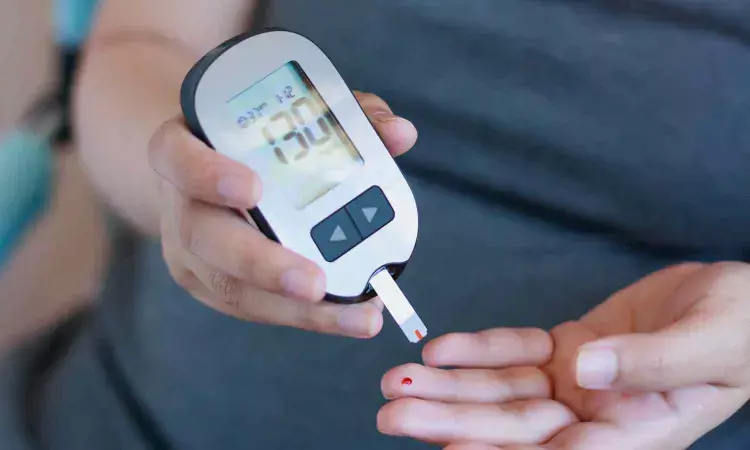- Home
- Medical news & Guidelines
- Anesthesiology
- Cardiology and CTVS
- Critical Care
- Dentistry
- Dermatology
- Diabetes and Endocrinology
- ENT
- Gastroenterology
- Medicine
- Nephrology
- Neurology
- Obstretics-Gynaecology
- Oncology
- Ophthalmology
- Orthopaedics
- Pediatrics-Neonatology
- Psychiatry
- Pulmonology
- Radiology
- Surgery
- Urology
- Laboratory Medicine
- Diet
- Nursing
- Paramedical
- Physiotherapy
- Health news
- Fact Check
- Bone Health Fact Check
- Brain Health Fact Check
- Cancer Related Fact Check
- Child Care Fact Check
- Dental and oral health fact check
- Diabetes and metabolic health fact check
- Diet and Nutrition Fact Check
- Eye and ENT Care Fact Check
- Fitness fact check
- Gut health fact check
- Heart health fact check
- Kidney health fact check
- Medical education fact check
- Men's health fact check
- Respiratory fact check
- Skin and hair care fact check
- Vaccine and Immunization fact check
- Women's health fact check
- AYUSH
- State News
- Andaman and Nicobar Islands
- Andhra Pradesh
- Arunachal Pradesh
- Assam
- Bihar
- Chandigarh
- Chattisgarh
- Dadra and Nagar Haveli
- Daman and Diu
- Delhi
- Goa
- Gujarat
- Haryana
- Himachal Pradesh
- Jammu & Kashmir
- Jharkhand
- Karnataka
- Kerala
- Ladakh
- Lakshadweep
- Madhya Pradesh
- Maharashtra
- Manipur
- Meghalaya
- Mizoram
- Nagaland
- Odisha
- Puducherry
- Punjab
- Rajasthan
- Sikkim
- Tamil Nadu
- Telangana
- Tripura
- Uttar Pradesh
- Uttrakhand
- West Bengal
- Medical Education
- Industry
Heart Drug Verapamil May Cut Risk of Type 2 Diabetes, New Research Suggests

Australia: A new study published in Diabetes Care has found that verapamil, a calcium channel blocker (CCB) commonly used for hypertension and heart conditions, may also lower the risk of developing type 2 diabetes compared to other drugs in the same class.
The findings build on earlier research showing that verapamil slows the progression of type 1 diabetes, suggesting that it might have a protective effect against type 2 diabetes as well. To explore this hypothesis, Julian W. Sacre from the Clinical Diabetes and Epidemiology Department, Baker Heart and Diabetes Institute, Melbourne, Australia, and colleagues analyzed data from a large, population-based Australian cohort.
The study included 90,026 adults who began treatment with a calcium channel blocker between July 2003 and December 2014. All participants had at least two prescriptions of a CCB and were followed until discontinuation, diabetes diagnosis, death, or the end of 2014. Diabetes incidence was determined through the initiation of glucose-lowering medication or registration in the National Diabetes Services Scheme.
Using multistate Poisson regression models with adjustments for potential confounders through propensity scoring, the researchers compared outcomes between verapamil users and those who took other CCBs, mainly dihydropyridines.
The study led to the following notable findings:
- A total of 4,485 individuals (5%) were treated with verapamil, while 85,541 participants received other calcium channel blockers.
- During a median follow-up of 1.6 years, 101 new cases of type 2 diabetes were reported among verapamil users, translating to 8.8 cases per 1,000 person-years.
- In comparison, 2,622 cases occurred among users of other CCBs, corresponding to 11.4 cases per 1,000 person-years.
- After adjusting for confounding variables, verapamil use was linked to a 23% lower risk of developing type 2 diabetes, with an incidence rate ratio of 0.77.
- Over a six-year period, the probability of developing diabetes was 4.2% among verapamil users versus 5.4% among those using other CCBs, showing an absolute risk reduction of 1.3%.
- The findings remained consistent across various sensitivity analyses, confirming the reliability of the results.
The researchers concluded that verapamil may offer metabolic benefits beyond its established cardiovascular effects. By potentially reducing the onset of type 2 diabetes, the drug could represent a promising therapeutic option for individuals at high risk of both hypertension and metabolic disorders.
Overall, the study provides compelling evidence that verapamil use is linked to a lower incidence of type 2 diabetes compared to other calcium channel blockers, opening new possibilities for its role in diabetes prevention.
Reference:
Julian W. Sacre, John M. Wentworth, Dianna J. Magliano, Jonathan E. Shaw; Incidence of Type 2 Diabetes With Verapamil Compared With Other Calcium Channel Blockers. Diabetes Care 2025; dc251440. https://doi.org/10.2337/dc25-1440
Dr Kamal Kant Kohli-MBBS, DTCD- a chest specialist with more than 30 years of practice and a flair for writing clinical articles, Dr Kamal Kant Kohli joined Medical Dialogues as a Chief Editor of Medical News. Besides writing articles, as an editor, he proofreads and verifies all the medical content published on Medical Dialogues including those coming from journals, studies,medical conferences,guidelines etc. Email: drkohli@medicaldialogues.in. Contact no. 011-43720751
Next Story


